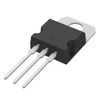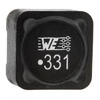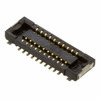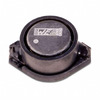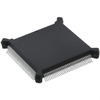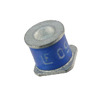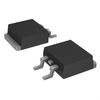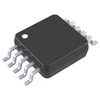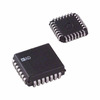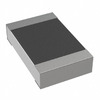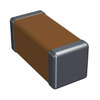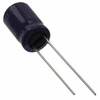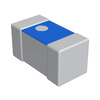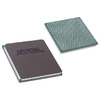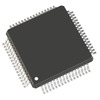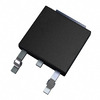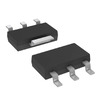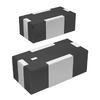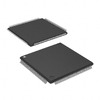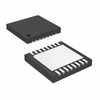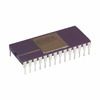5G Frequency Bands: 3 Primary Bands and When to Use Them
As the world quickly moves into an age led by advanced wireless communication, understanding the details of 5G technology becomes very important. At the heart of 5G's groundbreaking potential are the frequency bands it uses, each serving unique roles and offering specific benefits. This article explores the three main 5G frequency bands—low-band, mid-band, and high-band—looking at their features, uses, and the best situations for their use. By explaining these frequency bands, we aim to give a clear overview that will improve your understanding of how 5G technology will change connectivity in different settings.
Catalog
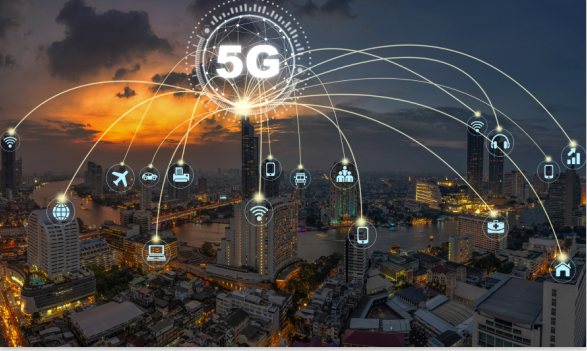
Figure 1: 5G Technology
What Frequency is 5G?
5G cellular technology works on three main frequency bands, each serving different purposes and offering unique benefits. The low-band frequency (600MHz to 1GHz) covers wide areas and can pass through buildings well but has slower data speeds. The mid-band frequency (2.5GHz to 3.7GHz) provides a balance between coverage and speed, offering faster data rates while still covering large areas and passing through obstacles reasonably well. The high-band frequency (24GHz to 40GHz), known as millimeter-wave (mmWave), provides the fastest data speeds but has a limited range and poor ability to pass through buildings, making it best for busy city areas where short-range, high-speed connections are needed.
In comparison, 4G/LTE technology uses frequency bands between 700MHz and 2.5GHz. This range overlaps with the low and mid-band frequencies of 5G but does not include the high-band range. As a result, 4G/LTE cannot achieve the maximum data speeds that 5G’s high-band frequencies offer.

Figure 2: Illustration of Low-Band, Mid-Band, and High-Band 5G Signals in a Cityscape
The specific frequency bands used for 5G can vary by region and are managed by international and national organizations. The International Telecommunication Union (ITU) coordinates globally and sets international standards. In the United States, the Federal Communications Commission (FCC) regulates and assigns frequency bands for 5G. In Europe, the European Telecommunications Standards Institute (ETSI) plays an important role in defining the frequency bands for 5G.
Each of these organizations makes sure that the assigned frequencies meet the needs of 5G technology while also considering factors like interference, coverage, and the efficient use of the radio spectrum.
5G Frequency Bands Explained
5G Low-band Frequencies: 600MHz to 1GHz

Figure 3: Frequency Bands for 5G, 4G, and 3G
Low-band frequencies are very good at providing wide coverage over large areas, with effective ranges reaching tens of kilometers. They can go through walls and buildings, making them especially useful in rural or less populated regions. This ability to penetrate ensures that people in these areas get stable and reliable network coverage. Low-band frequencies are especially good for applications that need steady connectivity rather than high-speed performance, such as voice calls and basic internet browsing. These applications benefit from the constant and dependable signal provided by low-band frequencies, which is very important in areas where higher-frequency signals often don't give enough coverage. By offering broad and reliable coverage, low-band frequencies help ensure communication accessibility in regions where keeping a stable connection matters more than having high data transfer rates.
Mid-band frequencies are an important part of today's wireless communication systems, offering a good balance between speed and coverage. Operating between 1 GHz and 6 GHz, these frequencies provide much higher internet speeds compared to low-band frequencies, which are below 1 GHz. However, this speed advantage comes with a trade-off in terms of range and penetration capabilities.
Mid-band frequencies typically cover distances up to a few hundred meters, which is much shorter than the reach of low-band frequencies that can extend for several kilometers. Also, mid-band frequencies are not as good at penetrating buildings and other obstacles, making them less effective in areas with many physical barriers.
Despite these limitations, mid-band frequencies are widely used in urban and suburban areas where the density of users and devices needs higher data rates. The improved speeds support a variety of applications, such as high-definition video streaming and smart city infrastructure, including IoT devices that require strong and fast connections. These frequencies offer faster internet speeds than low-band frequencies while still providing better coverage than high-band frequencies, which, although faster, cover even shorter distances and have even poorer penetration.
The strategic use of mid-band frequencies in densely populated areas helps meet the growing demand for high-speed internet, supporting services that rely on quick data transmission and low delay. This balance makes mid-band frequencies a flexible choice for modern wireless communication needs.
5G High-band Frequencies: 24GHz to 40GHz
High-band frequencies, often called millimeter wave (mmWave), are leading the way in 5G technology, offering incredibly fast wireless data speeds. This advanced frequency range greatly improves wireless communications by boosting network capacity, allowing for quicker data speeds, and supporting more connected devices at the same time.
These mmWave frequencies are especially helpful in crowded places like cities, stadiums, and shopping centers, where the need for high-speed, reliable connections is highest. The faster data transfer rates of mmWave make for smooth streaming, quick downloads, and efficient handling of large amounts of data.
However, mmWave frequencies have their own challenges. Their range is quite short, usually only tens of meters, and they can be easily blocked by physical objects like buildings, trees, and even weather. To overcome these issues, new technologies such as 5G beamforming and small cell networks have been developed.
Beamforming is a method that sends signals directly to specific devices instead of spreading them in all directions. This focused approach reduces interference, strengthens the signal, and improves overall connection quality. Small cell technology involves placing many small base stations, or cells, around an area to increase coverage and capacity. These small cells work together to ensure steady connectivity and help with the range limits of mmWave frequencies.
By using these advanced technologies, the use of high-band frequencies in 5G networks becomes possible, opening up a new era of wireless communication with unmatched speed and connectivity.
The Role of 5G Technology

Figure 4: The Role of 5G Technology
5G technology changes communication by using different frequency bands: low, mid, and high, to fit various needs and settings. It combines traditional radio frequency (RF) bands (FR1) with new-radio bands (FR2) to improve data speeds, delay, signal reliability, and device connections.
Low-frequency bands cover large areas and penetrate buildings well, though they have slower data speeds. These are good for rural areas and widespread connections. Mid-frequency bands provide faster data speeds and decent coverage, making them great for cities where a mix of good signal and speed is needed. High-frequency bands, or millimeter waves (mmWave), offer very fast data speeds and low delay but have a short range and don’t go through obstacles well. These are ideal for dense city areas and special uses like self-driving cars, remote surgery, and advanced manufacturing.
Using all these bands together lets 5G support many different uses. Enhanced Mobile Broadband (eMBB) uses the high-speed abilities of mid and high-frequency bands for faster internet and better streaming. Ultra-Reliable Low Latency Communications (URLLC) benefits from the low delay of high-frequency bands, which is needed for uses like self-driving cars and factory automation. Massive Machine Type Communications (mMTC) uses the wide coverage of low-frequency bands to support the Internet of Things (IoT), connecting many devices with good performance.
This approach allows 5G to provide smooth connections tailored to the needs of different settings, improving user experiences and supporting new technologies. The mix of FR1 and FR2 bands ensures that 5G can offer full coverage, high data speeds, and low delay, making it a flexible and strong technology for the future.
5G Bands and Their Uses

Figure 5: Coverage and Throughput of 5G, 4G, and 3G Across Different Frequency Bands
Low Band
Low-band 5G works in the 600 to 700MHz range. This band is known for its wide coverage, which can effectively reach rural and remote areas. However, it offers lower data speeds, averaging around 50 Mbps. This makes low-band 5G particularly helpful for uses that need broad coverage rather than high speed, such as nationwide mobile networks and industries like energy and agriculture. In these fields, it helps with long-distance communication and monitoring of remote sites and sensors, ensuring steady connectivity over large areas.
Mid Band
Mid-band 5G works between 1.7GHz and 2.5GHz and finds a middle ground between coverage and speed, delivering data rates ranging from 100 to 900 Mbps. This band is commonly used in suburban and urban areas, where a mix of decent coverage and higher speeds is needed. Mid-band 5G supports many uses, including smart city infrastructure, which relies on interconnected devices to manage resources efficiently, and educational institutions and business parks that benefit from better connectivity for a wide range of activities.
High Band
High-band 5G, also known as millimeter-wave (mmWave) 5G, works at frequencies of 24GHz and higher. This band provides the highest data speeds, reaching up to 10 Gbps, but its range is limited to short distances, making it best suited for densely populated urban areas. High-band 5G is very useful for uses demanding ultra-low delay and high data rates, such as real-time IoT data transmission, augmented reality (AR), virtual reality (VR), and live streaming. These applications benefit from the high capacity and speed of mmWave 5G, which can handle large amounts of data quickly and efficiently.
Accessing 5G Bands
Accessing 5G bands is a simple process for end users, as the network automatically handles the selection and switching between various bands during data transmission. This automatic adjustment ensures users get the best performance without needing to do anything.
5G devices are typically designed with multiple antennas, each supporting different frequency bands. These antennas help the device adapt to different conditions, such as the user's location or changes in the surrounding environment. For example, when a user moves from an urban area with high-frequency millimeter wave (mmWave) coverage to a suburban or rural area where lower-frequency bands like Sub-6 GHz are more common, the device smoothly transitions to the right band. This automatic switching maximizes data speed, reduces delays, and keeps a stable connection.
5G Bands and Business Applications

Figure 6: 5G Bands and Business Applications for Coverage, Capacity, and Latency
Businesses can wisely use different 5G bands to improve service quality and coverage. The 5G spectrum is divided into three main bands: low, mid, and high frequencies, each serving different purposes and offering unique benefits.
Low-band frequencies, typically below 1 GHz, are good for long-distance communication. They have a wide reach and can pass through buildings and obstacles better than higher frequencies. This makes low-band 5G great for rural areas or places with difficult terrain, ensuring broader coverage and connectivity even in less populated regions.
Mid-band frequencies, ranging from 1 GHz to 6 GHz, offer a balance between coverage and speed. These frequencies provide faster data rates than low-band frequencies while still covering a reasonable distance. Mid-band 5G is good for urban and suburban areas, delivering better service quality without needing a dense network of towers.
High-band frequencies, also known as millimeter waves (mmWave), operate above 24 GHz and offer very high-speed connectivity. These frequencies support the highest data rates and are needed for applications requiring a lot of bandwidth, such as augmented reality, virtual reality, and high-definition video streaming. However, high-band frequencies have a limited range and poor penetration capabilities, making them best suited for targeted areas like stadiums, airports, and urban centers with a lot of users.
By using a mix of these bands, businesses can create a complete 5G network that maximizes both coverage and performance. Low-band frequencies ensure wide-area coverage and reliable connectivity, while mid-band frequencies offer a good balance between speed and reach. High-band frequencies, despite their limited range, provide the ultra-fast speeds needed for specific high-demand scenarios.
This wise use of mixed band transmissions helps eliminate dead zones and ensures a more consistent and reliable service across different environments. For instance, in a city, businesses might use high-band 5G in crowded downtown areas to support high-speed applications, while using mid-band frequencies in residential neighborhoods to provide strong and fast internet access. In rural areas, low-band frequencies can cover large areas efficiently, ensuring that even remote locations stay connected.
Conclusion
5G technology operates across three main frequency bands—low-band, mid-band, and high-band—each adding something unique to how the network works and how useful it is. Low-band frequencies provide wide coverage and stable connections, especially in rural and less populated areas. Mid-band frequencies balance speed and coverage, making them great for cities and suburbs. High-band frequencies, though short in range, offer very high data speeds, which are very useful for busy urban areas. Knowing the specific strengths and best uses of these frequency bands is important for using 5G technology well.
Frequently Asked Questions [FAQ]
1. What are the applications of 5G band?
Low-band frequencies are used for wide coverage in rural areas, perfect for voice calls and basic internet. Mid-band frequencies offer a balance of speed and coverage, making them good for urban and suburban environments, supporting uses like HD streaming and smart city systems. High-band frequencies offer very fast data speeds for crowded areas, needed for real-time Internet of Things (IoT), augmented reality (AR), virtual reality (VR), and live streaming.
2. When 3.5 GHz band is to be used how is it normally referred to as?
The 3.5 GHz band is commonly referred to as the C-band.
3. What is the 3 5G spectrum?
The 3 5G spectrum refers to the three primary frequency ranges: low-band (600MHz to 1GHz), mid-band (2.5GHz to 3.7GHz), and high-band (24GHz to 40GHz).
4. Which two bands can 5G use to communicate?
5G can use both sub-6 GHz (which includes low and mid-band frequencies) and mmWave (high-band frequencies) to communicate.
5. Which band is best for 5G?
The best frequency for 5G depends on how you want to use it. For wide coverage, low-band is the best. For a mix of speed and distance, mid-band works well. For the fastest data speeds in crowded areas, high-band is the top choice.
About us
ALLELCO LIMITED
Read more
Quick inquiry
Please send an inquiry, we will respond immediately.
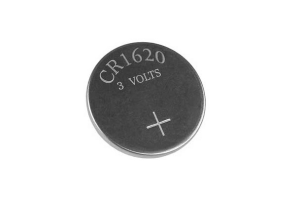
Guide to CR1620 Battery Performance and Comparisons
on July 18th
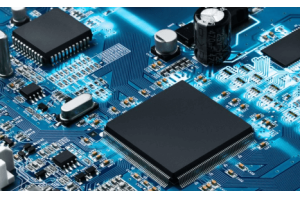
Microprocessor (MPU) or Microcontroller (MCU)
on July 17th
Popular Posts
-

What is GND in the circuit?
on January 1th 2915
-

RJ-45 Connector Guide: RJ-45 Connector Color Codes, Wiring Schemes, R-J45 Applications, RJ-45 Datasheets
on January 1th 2478
-

Fiber Connector Types: SC Vs LC And LC Vs MTP
on January 1th 2068
-

Understanding Power Supply Voltages in Electronics VCC, VDD, VEE, VSS, and GND
on November 8th 1862
-

Comparison Between DB9 and RS232
on January 1th 1751
-

What Is An LR44 Battery?
Electricity, that ubiquitous force, quietly permeates every aspect of our daily lives, from trivial gadgets to life-threatening medical equipment, it plays a silent role. However, truly grasping this energy, especially how to store and efficiently output it, is no easy task. It is against this background that this article will focus on a type of coin cell battery that may seem insignificant on the...on January 1th 1705
-

Understanding the Fundamentals:Inductance Resistance, andCapacitance
In the intricate dance of electrical engineering, a trio of fundamental elements takes center stage: inductance, resistance, and capacitance. Each bears unique traits that dictate the dynamic rhythms of electronic circuits. Here, we embark on a journey to decipher the complexities of these components, to uncover their distinct roles and practical uses within the vast electrical orchestra. Inductan...on January 1th 1647
-

CR2430 Battery Comprehensive Guide: Specifications, Applications and Comparison to CR2032 Batteries
What is CR2430 battery ?Benefits of CR2430 BatteriesNormCR2430 Battery ApplicationsCR2430 EquivalentCR2430 VS CR2032Battery CR2430 SizeWhat to look for when buying the CR2430 and equivalentsData Sheet PDFFrequently Asked Questions Batteries are the heart of small electronic devices. Among the many types available, coin cells play a crucial role, commonly found in calculators, remote controls, and ...on January 1th 1533
-

What Is RF and Why Do We Use It?
Radio Frequency (RF) technology is a key part of modern wireless communication, enabling data transmission over long distances without physical connections. This article delves into the basics of RF, explaining how electromagnetic radiation (EMR) makes RF communication possible. We will explore the principles of EMR, the creation and control of RF signals, and their wide-ranging uses. The article ...on January 1th 1522
-

CR2450 vs CR2032: Can The Battery Be Used Instead?
Lithium manganese batteries do have some similarities with other lithium batteries. High energy density and long service life are the characteristics they have in common. This kind of battery has won the trust and favor of many consumers because of its unique safety. Expensive tech gadgets? Small appliances in our homes? Look around and you'll see them everywhere. Among these many lithium-manganes...on January 1th 1497
